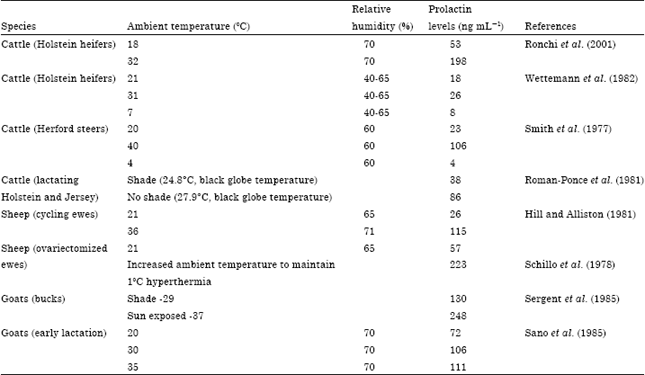Review Article
The Role of Prolactin in Thermoregulation and Water Balance During Heat Stress in Domestic Ruminants
Department of Animal and Fish Production, College of Agricultural Sciences and Foods, King Faisal University, P.O. Box 400, Hofuf 31982, Saudi Arabia











